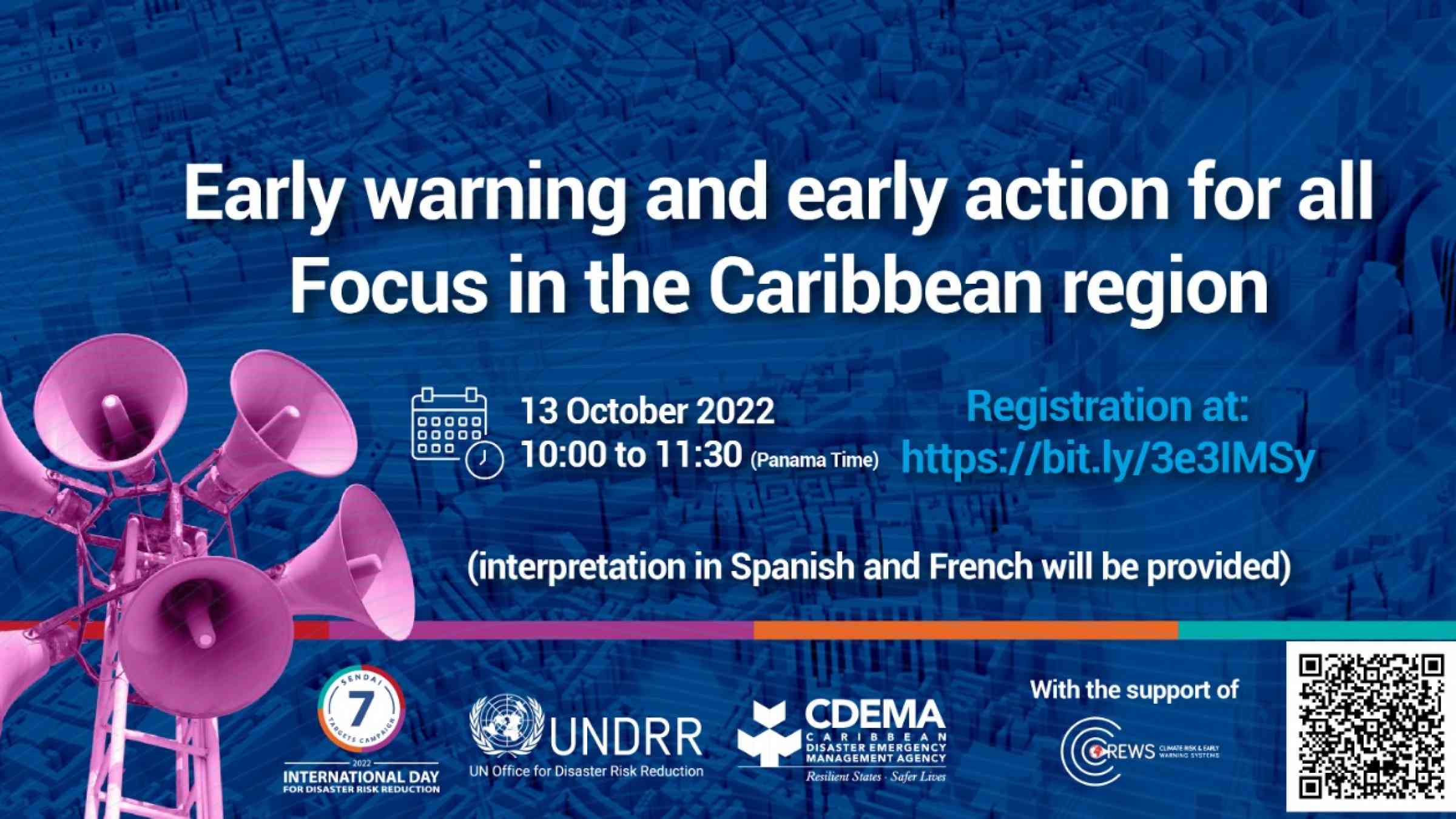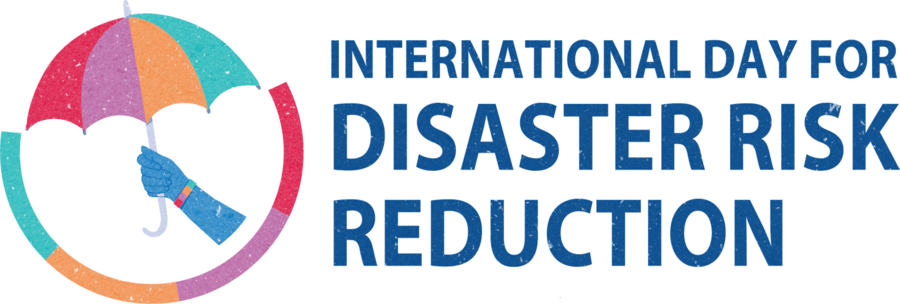IDDRR: Early warning and early action for all - Focus in the Caribbean region

- English
- French
- Spanish
Time
10:00 to 11:30 (Panama Time)
Spanish and French interpretation would be available
About
From 2000 to 2019, and despite the relatively small landmass and total population, the Caribbean has experienced 163 storm events affecting over 25 million people and resulting in over 5,000 deaths. Additionally, storm events in the Caribbean have caused US$ 121 billion in direct economic losses, a relatively devastating impact for a small region. In 2019, for instance, Hurricane Maria damaged approximately 90% of housing stock in the Commonwealth of Dominica. The hurricane is estimated to have cost the country 225% of its Gross Domestic Product. As a matter of fact, 7 out of the 10 countries with the highest cost of disasters relative to their GDP are in the Caribbean.
Just recently we all witness how the entire island of Puerto Rico lost power as Hurricane Fiona made landfall leaving more than 1.5 million people without electricity. Facing these challenges time and again puts development in absolute jeopardy.
The United Nations General Assembly has designated 13 October as the International Day for Disaster Risk Reduction (IDDRR) to promote a global culture of disaster risk reduction. The 2022 edition takes place during the Midterm Review of the Sendai Framework, which will conclude at a High-level Meeting of the General Assembly in May 2023 with a political declaration.
It is an opportunity to acknowledge the progress being made in the Caribbean toward preventing and reducing disaster risk and losses in lives, livelihoods, economies and basic infrastructure in line with the international agreement for reducing global disaster risk and losses, the Sendai Framework for Disaster Risk Reduction 2015-2030, adopted in March 2015.
The Sendai Framework has seven global targets and 38 indicators for measuring progress on reducing disaster risk and losses. In 2022, the International Day will focus on Target G of the Sendai Framework: “Substantially increase the availability of and access to multi-hazard early warning systems and disaster risk information and assessments to people by 2030.”
In line with the Sendai Framework, enhanced regional integration and cooperation mechanisms are required for effective disaster risk reduction governance. Many disasters can be avoided or prevented if there are funded strategies in place to manage and reduce existing levels of risk and prevent the creation of new risks. These strategies must not only integrate different government sectors but also different levels of government and multiple actors. Systemic problems need to be addressed with systemic solutions.
Through the format of flash talks, the webinar will present the opportunities that MHEWS provide to better understand systemic risk and cope with it. It will showcase country cases, and will offer the opportunity to MHEWS end-users to express their views on the needs and priorities that need to be addressed for an effective MHEWS implementation. It would be also an opportunity to disseminate to a larger public the different mechanism that at the global and regional level are being offer to advance MHEWS in the region.
